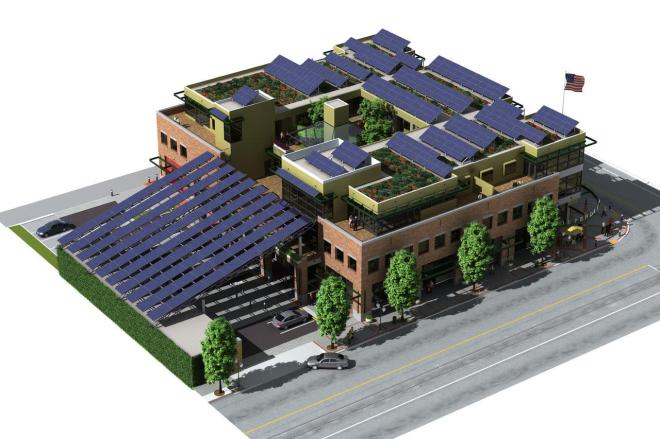Sysytems, Sites and Building examines systems at a multitude of levels from the global scale of the weather to the minute diagram of a window detail. Recently we have begun to narrow down in scale and discuss more specific, smaller systems. Along with this we read excerpts from Jane Jacobs’ book The Death and Life of Great American Cities. This book as Jacob puts it “is an attack on current city planning and rebuilding” (3). This attack is at the scale of the city and even the country. Jacobs is pushing for a sustainable society. However the ideas Jacobs raises can be applied to any scale. She talks about how the steps that city planners are taking are making the situation worse and how the priorities of the people in charge are not all for the best. She says, “This is not the rebuilding of cities. This is the sacking of ones” (4). The idea of sacking of cities is very applicable to the way some policies are still being run today, from the scale of building unnecessary highways and interstates but also moving down to buildings, like malls or strip malls that are still being constructed incredibly unsustainably. Jacobs book also discusses many problems with the instated policies. I think it would be very interesting for policy makers in every field of construction to take a more sustainable approach. Instead of making LEED (Leadership in Energy and Environmental Design) buildings a goal make LEED buildings be the standard. This standard would be hard to put in place but as Jacobs says, “Cities are an immense laboratory of trial and error, failure and success” (7), so perhaps over time the standard would increase to a level approaching LEED or beyond.
At LEED Platinum, Oregon’s Independence Station is the highest ranking LEED building. It runs on 100% renewable energy.
The idea of energy and policy is interesting and connects to the focus of the past couple lectures, which dealt with energy transfer and how buildings in a sustainable society could be kept at a reasonable climate. In class we discussed how many techniques for maintaining temperature efficiently are nowhere near perfected and new sustainable designs are constantly being thought of and modified. This process is again a trial and error method where designers must experiment with what works and what doesn’t combining different techniques for specific sites until something works. This design method only works if designers are not shy, and put developing concepts out into the world to be critiqued and molded into bigger and better ideas. Ideas that even seem absurd like an automated underground bicycle garage, when put out into the real world can be used to create solutions to very real issues.

Actual Underground Bicycle Parking in Japan.
Citations:
Independence Station:
http://www.jetsongreen.com/2008/02/independence-st.html
Jacobs, Jane. The Death and Life of Great American Cities. New York: Vintage Books, 1961.
Underground Bicycle Parking:


